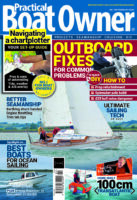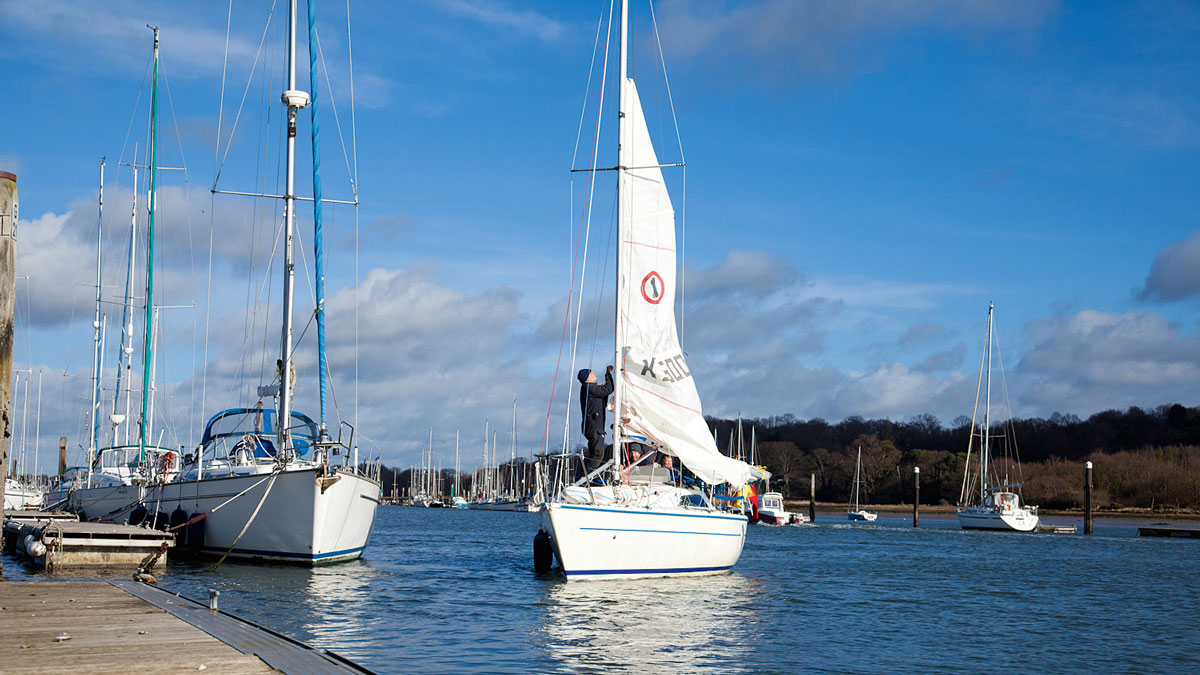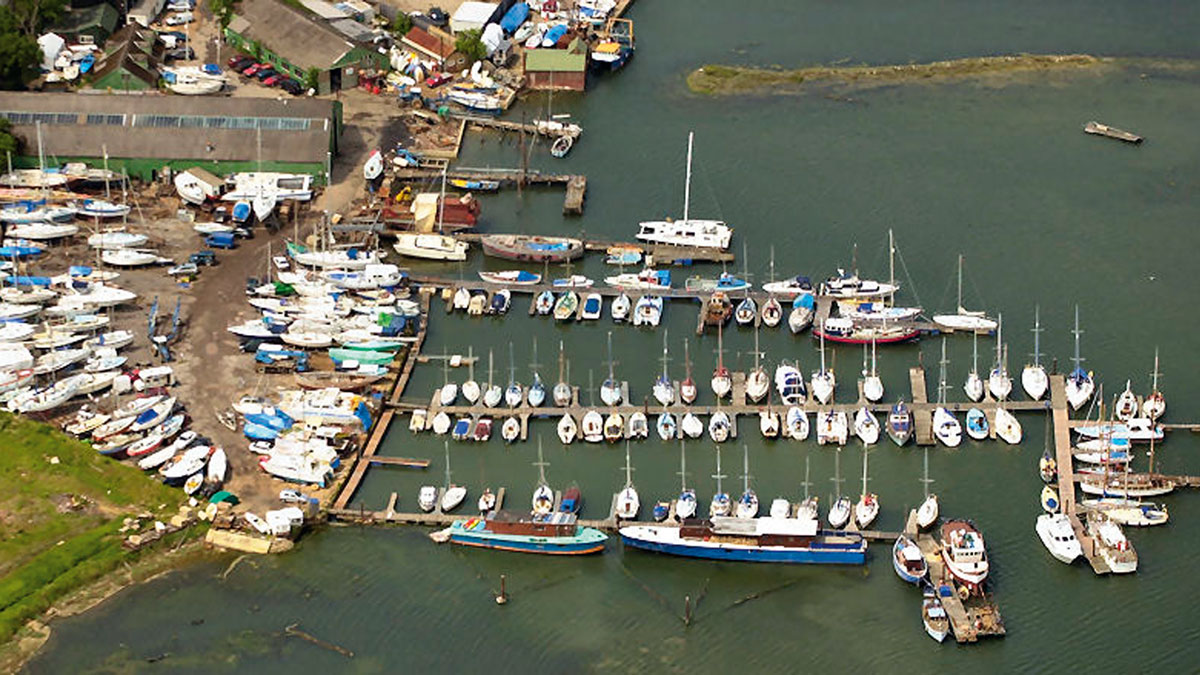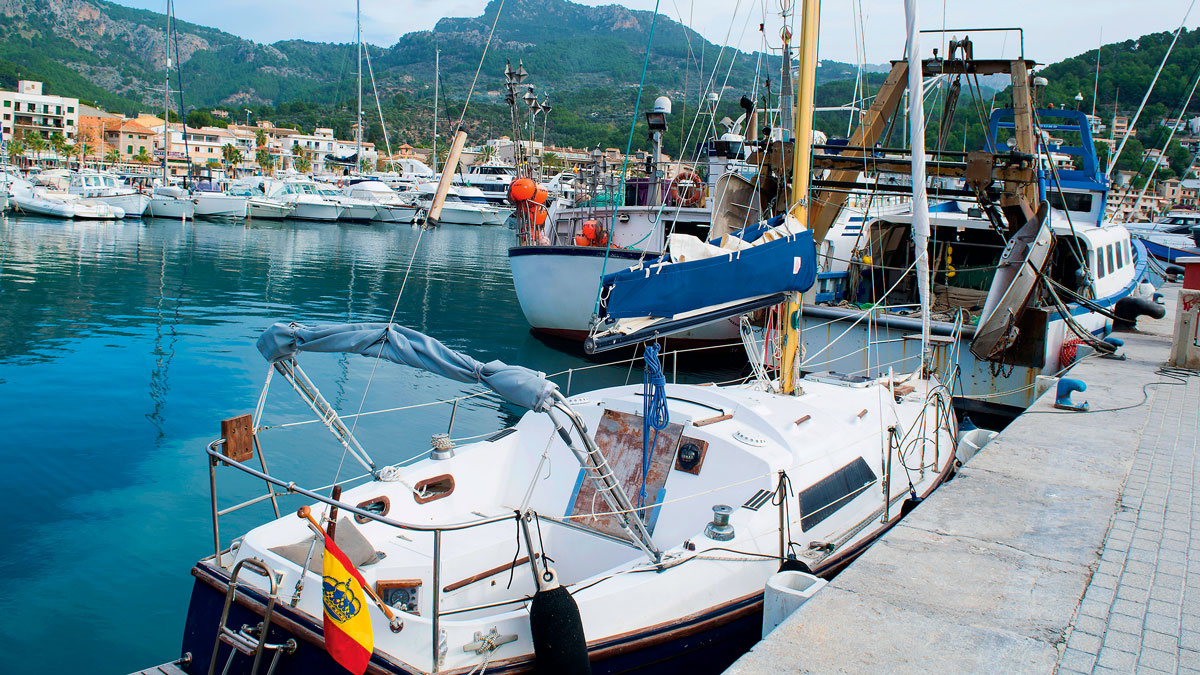When couples sail together, one usually takes the lead when it comes to marina boat manoeuvring, remaining on the helm, while the other does the leaping around – but that’s not always the best division of labour, as David Harding reports
It would be getting into dangerous waters to discuss the best roles for the man and the woman in a partnership when they sail as a couple – or even simply as boatmates.
Let’s just say that it seems more usual – for better or for worse – for him to be at the helm and for her to be leaping around tending the winches and lines or, on the approach to a marina, the warps and fenders.
That’s the way it always used to be for Rosemary Taylor. ‘I’ve sailed for a long time, but with people who have tended to take charge of the boat handling,’ she says.

Boat manoeuvring tip: Practise out in the open water first. Credit: David Harding
Now sailing with Barry Mills on their twin-keeled Legend 36, Bright Spirit, she has begun to think that perhaps it’s time she learned to take charge of the boat herself. ‘I’m less agile than Barry, so it would really make more sense for me to drive and for him to step ashore.’
That logic is hard to argue with, so I went to Plymouth Yacht Haven to meet them both.
The other person I went to meet was Tim Hallowes, a local instructor and experienced sailor whose job for the day was to give Rosemary some guidance and let her gain confidence at the wheel when close to other boats.
No matter how competent the skipper is in a partnership, whether it’s a man or a woman, it often seems to work better for a third party to do the instructing – so Barry agreed to be crew for the day and let Tim and Rosemary get on with it.
Know your yacht for better boat manoeuvring
Before getting behind the wheel, it’s good to have some idea of what handling characteristics to expect.
With her Volvo Saildrive engine and left-handed prop, Bright Spirit steers gently to starboard in ahead while the stern pulls to starboard in astern.
Barry notes that, since the original fixed three-bladed propeller was replaced by a Kiwiprop, sailing speeds have increased by up to a knot all round – an enormous gain for no extra work.
Basics of boat manoeuvring
Are you standing comfortably?
Reversing is a vital skill, and Tim was keen to emphasise the importance of keeping a firm hold of the wheel: the water is flowing the wrong way over the rudder and can otherwise slam it hard over.
He showed how, rather than look over your shoulder, it can help to stand forward of the wheel and face aft when reversing more than a few yards.
Facing aft, you still turn the wheel the way you want the boat to go rather than having to think in reverse.
Tim left Rosemary to adopt whichever position she was most comfortable with.
Which way to turn?

Once the boat was out of her berth and into open water, Tim demonstrated how, because the prop-walk pulls the stern to starboard in reverse, the boat turns more tightly anti-clockwise than clockwise in a confined space with a combination of forward and reverse
Letting her lie

Tim’s third point to illustrate in open water was how Bright Spirit would lie when stopped, subject only to the effects of the wind.
Like most boats, she lay with the wind over her quarter.
It’s vital to remember that the bow will tend to blow downwind and that the stern will tend to seek the wind, and the slower the boat’s moving in relation to the wind the more pronounced the tendency.
This is important if there was an unexpected meeting with another boat in the confines of a marina, when the helmsperson might have to stop or slow down and the wind would exert a relatively greater influence.
Keeping control at low speed

Now it was time to head back into the marine to practise some turns. Tim suggested the bay by the fuel berth, where there’s plenty of space.
Heading up the approach, parallel to the marina’s outermost pontoon that provides protection from the north and west, we noticed another yacht on the way out.
It was just turning the corner to starboard and we needed to slow down so as to pass at an easier spot.
That meant moving across to starboard as far as possible but, with the prevailing south-westerly wind on our bow, not slowing down so much that we lost steerage way of the bow would blow off. The pass went smoothly
A first multi-point turn
In the fuel berth bay, there’s plenty of room for Rosemary to spin the boat through 180° in one go just by turning the wheel, but Tim wanted to make it more of a challenge.
‘Let’s pretend the fuel berth is occupied, so you have to turn around and head out again – but using only half the space available, making it a three (or more)-point turn.’
With Rosemary still at the helm and turning to port (anti-clockwise) as explained earlier, Tim showed her how to reverse the wheel when going astern to help swing the stern to starboard and then turn the wheel to port again before engaging forward gear to maximise the effects of the prop-wash over the rudder and help turn the bow to port.
It’s not always worth reversing the wheel in a tight turn, however, as we’ll see.

1. Rosemary spins the wheel to port and eases back on the throttle

2. Now she engages reverse and turns the wheel the other way to bring the stern to starboard – but it’s not worth moving forward of the wheel just for a few yards in astern.

3. Ahead again with the wheel to port, using the prop-wash to swing the bow to port…

4. …then astern, but not for long enough for it to be worth reversing the direction of the wheel.

5. Finally another little burst of ahead swings the bow to port
Gently does it
With someone who’s new to helming in close-quarters situations, it’s important to take things gently – and to let the pupil do as much of the work as possible.
Tim gave Rosemary plenty of advice and encouragement and was close by throughout, but rarely needed to touch either the helm or the throttle.
He started in open water where there was time to think and space to spare, explaining the most important fundamentals of boat manoeuvring and handling before putting some of this into practice within the relative confines of a marina.
Boat handling in a tight space
You might one day need to sail your boat into a marina without an engine. Rupert Holmes explains useful techniques…
Motorboat handling: techniques for rough weather
Gilbert Park undertakes some training for riding out heavy seas and wind in his Mitchell 28 – but first has…
Boat handling tips: marina exit strategies
You want to turn one way to get out of your berth, but both the boat and the wind have…
Boat handling: leaving a tight space
Peter Jones shares a technique for departing a pontoon with limited room for manoeuvre, against a pontoon or between rafts…
Want to read more seamanship articles like Marina boat manoeuvring: reversing the roles?

A subscription to Practical Boat Owner magazine costs around 40% less than the cover price.
Print and digital editions are available through Magazines Direct – where you can also find the latest deals.
PBO is packed with information to help you get the most from boat ownership – whether sail or power.
-
-
-
- Take your DIY skills to the next level with trusted advice on boat maintenance and repairs
- Impartial in-depth gear reviews
- Practical cruising tips for making the most of your time afloat
-
-
Follow us on Facebook, Instagram, TikTok and Twitter








